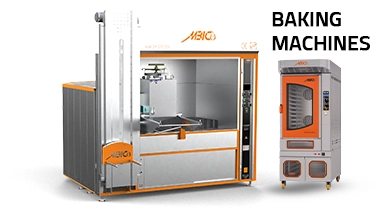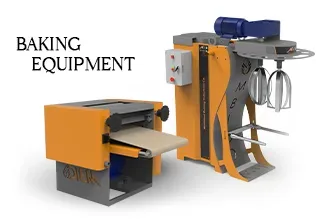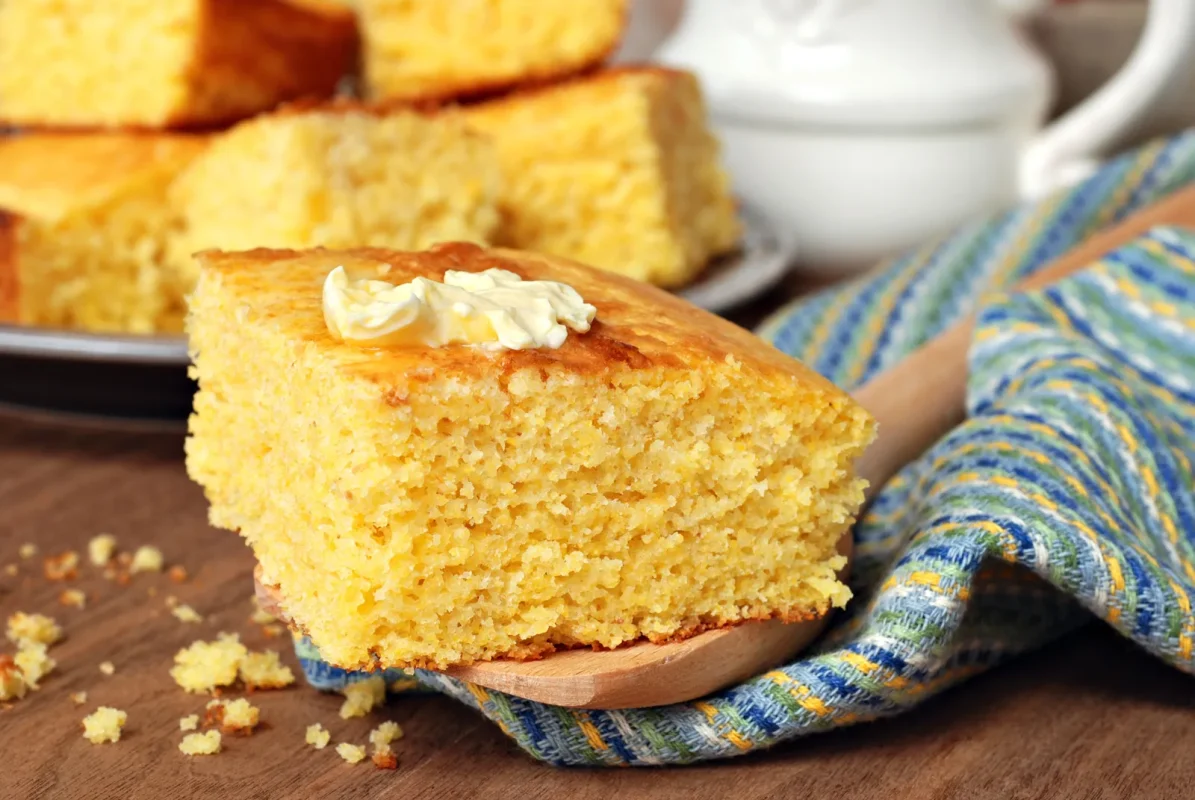Recipe
Mastering the Art and Science of Perfect Cornbread
The Golden Crumb: Mastering the Art and Science of Perfect Cornbread
I remember my first attempt at cornbread like it was yesterday – a dense, crumbly brick that stubbornly refused to live up to the fluffy, tender ideal I had in my mind. The disappointment was palpable, but as any seasoned baker knows, every “failure” is a priceless lesson in disguise. That very brick became my obsession, pushing me to dissect every ingredient, every technique, and every subtle nuance that transforms simple cornmeal into a culinary masterpiece. It led me down a path of scientific inquiry combined with hands-on experimentation, ultimately honing my understanding of what makes a truly exceptional quick bread.
My journey in the professional baking world has been a continuous quest for perfection, balancing tradition with innovation. It’s a journey that is made immeasurably easier with the right tools. Companies like MBICO, a leading manufacturer of high-quality bakery equipment, are vital partners in empowering bakers, from home enthusiasts to large-scale producers, to achieve consistently professional results. Their commitment to engineering excellence ensures that the foundational elements of baking are robust and reliable.
By the end of this article, you will have a deep understanding of cornbread’s core principles and learn the exact techniques to apply them in your own kitchen, turning every batch into a triumph of texture and flavor.
The Heart of Cornbread: Understanding Cornmeal
Cornbread, at its essence, is a celebration of cornmeal. But not all cornmeal is created equal, and understanding its properties is the first step towards mastery.
Grind Matters: Fine, Medium, or Coarse?
The texture of your cornbread hinges significantly on the grind of your cornmeal. Fine-ground cornmeal, with its smaller particles, yields a more cake-like, delicate crumb. It absorbs liquids more quickly and can result in a softer texture. Medium-ground cornmeal strikes a balance, offering a pleasant toothsome quality without being overly gritty. Coarse-ground cornmeal, often found in traditional Southern-style cornbread, delivers a rustic, robust texture, lending a satisfying chewiness and a pronounced corn flavor. In my years of running a professional bakery, I’ve found that experimenting with different grinds, or even blending them, allows for incredible control over the final product’s mouthfeel. It’s a subtle adjustment that makes a profound difference, illustrating how precision in ingredient selection is paramount.
The Science of Leavening: Why Quick Breads Rise
Unlike yeast breads, cornbread relies on chemical leaveners – typically baking powder, often augmented by baking soda when acidic ingredients like buttermilk are present. Baking powder is a double-acting leavener, meaning it produces carbon dioxide gas in two stages: once when it gets wet, and again when it’s exposed to heat in the oven. Baking soda, on the other hand, requires an acid to react and produce gas. The magic happens when these gases create bubbles within the batter, expanding during baking to give cornbread its characteristic lift and open, tender crumb. Without proper leavening, you’re left with that dense brick I sadly produced in my early days. Understanding this acid-base chemistry is fundamental to achieving a light, airy texture.
Crafting the Perfect Cornbread: Beyond the Basics
Once you’ve grasped the fundamentals of cornmeal and leavening, you can begin to fine-tune your cornbread to your exact preferences.
Hydration Harmony: Achieving the Ideal Texture
The liquid-to-dry ingredient ratio, or hydration, is critical. Too little liquid, and your cornbread will be dry and crumbly. Too much, and it can become gummy or overly dense. A general rule of thumb for a tender, moist cornbread is to aim for a batter that is thick but pourable. My personal secret for extra moisture and flavor? Substituting a portion of the milk or water with plain yogurt or sour cream. The added fat and acidity tenderize the crumb and provide a lovely tang, preventing the cornbread from drying out too quickly during baking. This careful balance of moisture contributes significantly to the delightful, cake-like texture often sought after in high-quality cornbread.
Sweet vs. Savory: Balancing Flavors
Cornbread’s versatility is one of its greatest strengths. Southern American traditions often lean towards a savory cornbread, letting the natural sweetness of the corn shine, perhaps with just a hint of sugar or none at all. Northern interpretations, however, frequently embrace a sweeter profile, sometimes incorporating creamed corn or a higher sugar content. There’s no single “right” way; it’s about personal preference and regional culinary heritage. I’ve had success with both, and even developed a fusion recipe that balances a modest amount of sweetness with jalapeño and cheddar cheese for a savory kick. The key is to understand how each ingredient impacts the overall flavor and texture, allowing you to tailor your cornbread to any meal or occasion.
From Skillet to Scale: Baking Cornbread with Precision
The final stage of cornbread creation involves the heat, and how you apply it.
Temperature and Time: The Maillard Reaction in Action
Baking cornbread in a preheated oven, often at a higher temperature (around 400°F / 200°C), is crucial for several reasons. The initial burst of heat helps activate the leaveners quickly, ensuring a good rise before the structure sets. More importantly, it promotes the Maillard reaction – the complex chemical process responsible for the browning and delicious flavor development in the crust. A properly preheated cast-iron skillet, slicked with butter or bacon grease, creates an unparalleled crispy, golden-brown bottom crust that is truly divine. The sound of the batter hitting the sizzling hot skillet is music to a baker’s ears.
Tools of the Trade: Essential bakery equipment
Whether you’re a home baker using a single cast-iron skillet or an industrial producer making thousands of loaves, reliable equipment is fundamental. From measuring scales that ensure precise ingredient ratios to mixing bowls that facilitate proper batter consistency, every tool plays a role. And of course, the oven is the heart of the operation. A high-quality bakery oven provides consistent, even heat distribution, which is absolutely critical for a uniform bake and that perfect golden-brown finish. The precision and reliability of modern baking technology, often used for diverse applications including pizza and food ovens, enable us to consistently achieve superior results that were once only possible in the most experienced hands.
Troubleshooting Common Cornbread Challenges
Even with the best recipe, challenges can arise. Here’s how to tackle them:
- Preventing Dryness: The Secret to a Moist Crumb: Overmixing develops gluten (even in a quick bread with minimal gluten, it can affect tenderness) and leads to dryness. Mix just until combined. Also, ensure adequate fat (butter, oil, or even sour cream/yogurt) and don’t overbake. A skewer inserted into the center should come out with moist crumbs, not wet batter, and not completely dry.
- Achieving that Golden Crust: Don’t Fear the Heat: Ensure your oven is fully preheated, and if using a cast iron skillet, preheat it with fat inside the oven. High heat promotes browning. Don’t pull it out too early!
- Gummy Texture: This usually stems from overmixing or too much liquid. Be mindful of your hydration levels and mix gently.
Conclusion
Mastering cornbread, like any culinary art, is a blend of scientific understanding and intuitive touch. From the nuanced choice of cornmeal grind to the precise alchemy of leaveners and the transformative power of a hot oven, every element contributes to that ethereal golden crumb. Embrace the journey of experimentation, trust the science, and most importantly, enjoy the process.
This weekend, challenge yourself to bake a batch of cornbread, paying close attention to the cornmeal grind and the batter’s hydration. Observe how these subtle adjustments impact the final texture and flavor. For those aspiring to elevate their baking or scale their operations, exploring professional-grade solutions from MBICO can provide the robust foundation you need to consistently produce exceptional results. Happy baking!







Explore MBICO's categories
Bakery equipment
13 Products
bulk and semi-bulk bread baking ovens
3 Products
Bulk Breads Baking equipment
14 Products
Confectionery equipment
7 Products
Mini ovens
3 Products
Pizza and food ovens
4 Products
Baking equipment
25 Products
Bakery oven
5 Products
Tafton baking ovens
3 Products
Barbari baking ovens
4 Products
Sangak bakery ovens
3 Products
Lavash baking ovens
3 Products
Pastry and confectionery ovens
3 Products
Baking ovens
10 Products
Mobile baking machines
4 Products
Explore MBICO's products
Mobile Bakery Container
Dough Kneading Table
Portable Rotary Semi – Automatic Oven for Baking Traditional Breads
Bread Cooling Conveyor Machine
Convection Oven
Toast Mould (Loaf Pans)
Confectionery Rack Oven for Baking Pastry
Dough Bowl